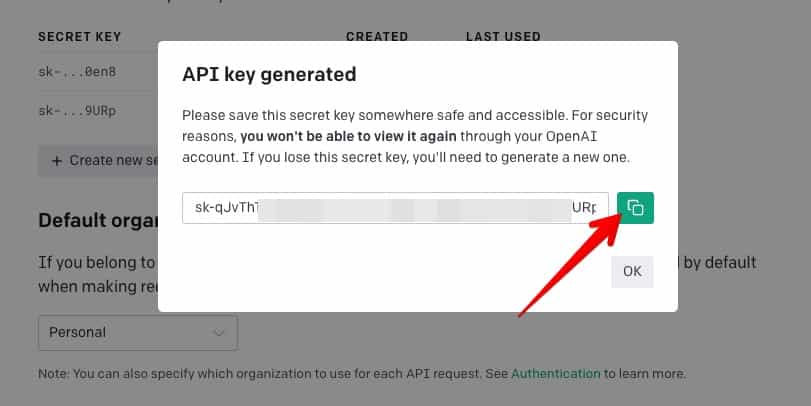As technology continues to advance, integrating artificial intelligence (AI) capabilities into mobile apps and online tools has become increasingly prevalent. OpenAI, a leading organization in AI research and development, offers powerful API services that enable developers to harness the potential of AI within their applications. This comprehensive guide will walk you through the process of obtaining your OpenAI API key, allowing you to unlock the full potential of AI in your mobile apps and online tools.
Step 1: OpenAI Developer Account Registration
To get started, visit the OpenAI website at www.openai.com and create a developer account. If you already have an account, simply Visit this link https://beta.openai.com/account/api-keys using your credentials.
Step 2: Navigating to the API Key Section

Once logged in, navigate to the developer dashboard by clicking on your account profile. In the dashboard, locate the API key section, which is where you can manage and generate API keys.
Step 3: Creating a New API Key
To generate a new API key, click on the “Create New Key” button or a similar option, depending on the OpenAI interface at the time of reading. You may be prompted to provide a name or description for the key to help you identify it later.

Step 4: Choosing the Appropriate API Plan
OpenAI offers different API plans tailored to various use cases. Before selecting your plan, carefully review the available options to ensure you choose the one that best suits your needs. Consider factors such as usage limits, pricing, and specific features provided.
Step 5: Retrieving Your API Key
After creating your API key and selecting your desired plan, the OpenAI platform will generate the key for you. This key is a unique string of characters that serves as your authentication token for accessing the API. Make sure to copy and securely store this key in a safe location, as it grants access to your OpenAI API resources.
Step 6: Implementing the API Key in Your Mobile App or Online Tool
To integrate the OpenAI API key into your mobile app or online tool, refer to the respective documentation and guidelines provided by OpenAI. The implementation process will vary depending on the platform and programming language you are using. OpenAI offers comprehensive documentation and code examples to facilitate the integration process, ensuring a seamless experience for developers.
Step 7: Testing and Iterating
Once you have successfully implemented the API key, it’s time to test your mobile app or online tool to ensure that the integration with the OpenAI API is functioning as expected. OpenAI provides a sandbox environment and extensive documentation with example code to help you test your application’s AI features thoroughly. If any issues arise during testing, consult the OpenAI support resources or developer community for assistance.
Conclusion: By following this comprehensive guide, you can easily obtain your OpenAI API key, allowing you to leverage the power of AI within your mobile apps and online tools. Remember to review the OpenAI API documentation and guidelines for specific instructions on integrating the API key into your application. With your API key in hand, you are well-equipped to explore and develop innovative AI-driven solutions that enhance user experiences and unlock new possibilities.

